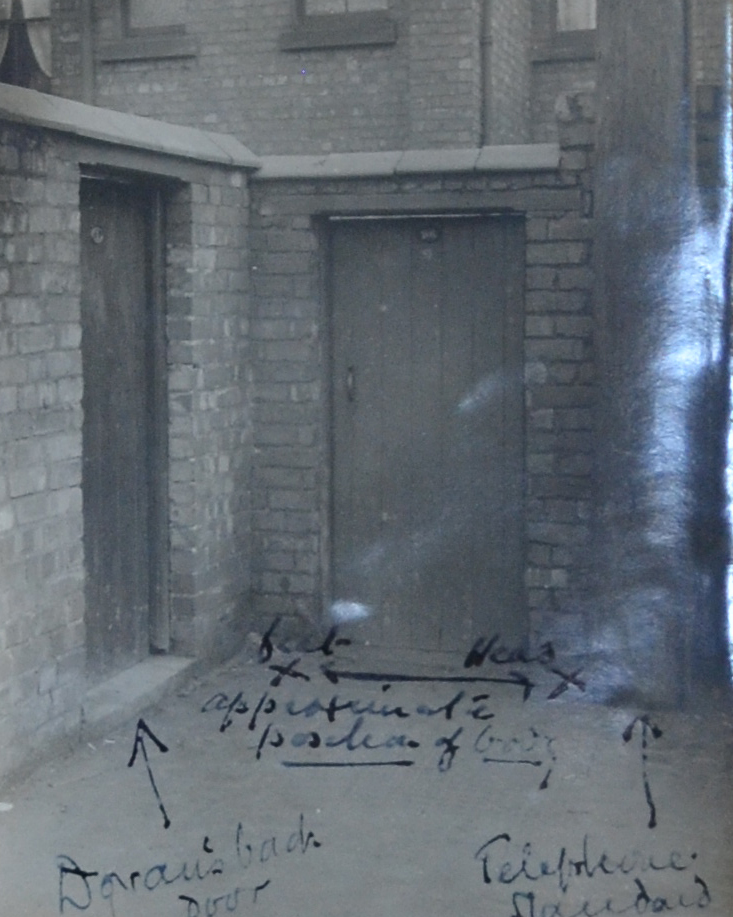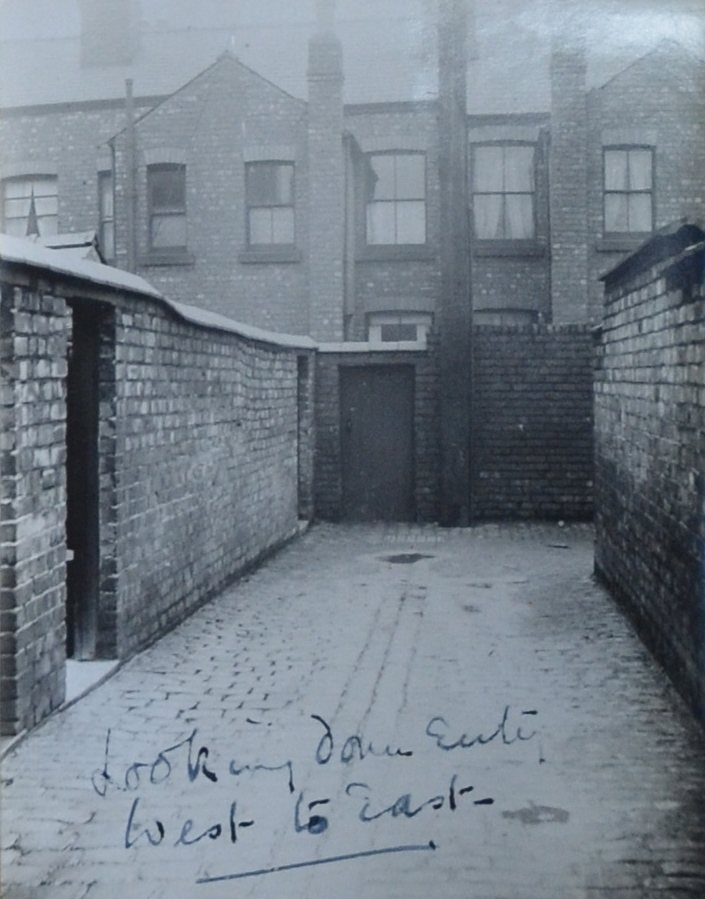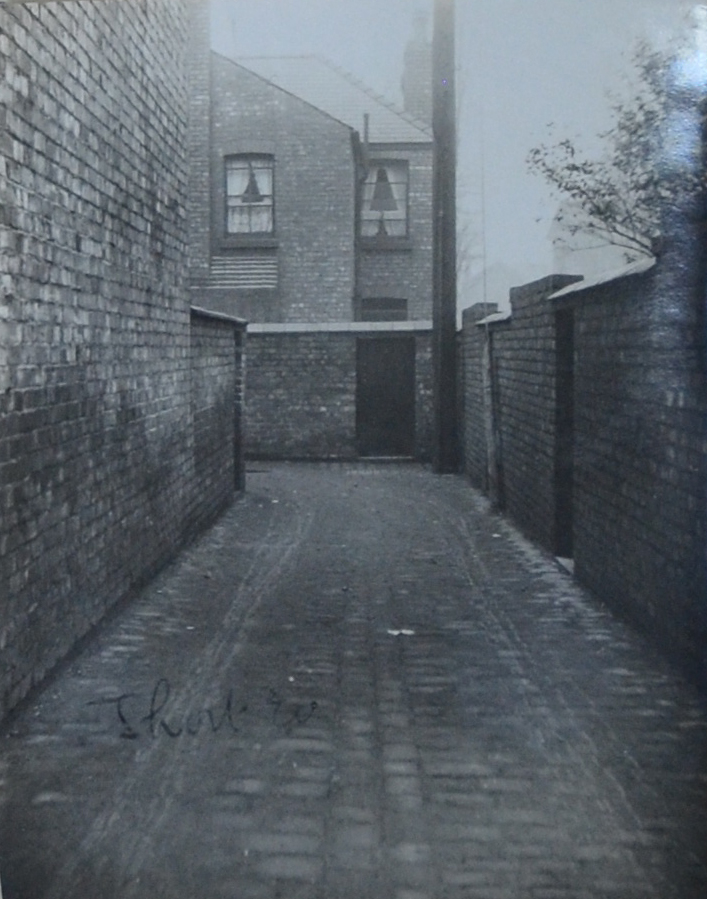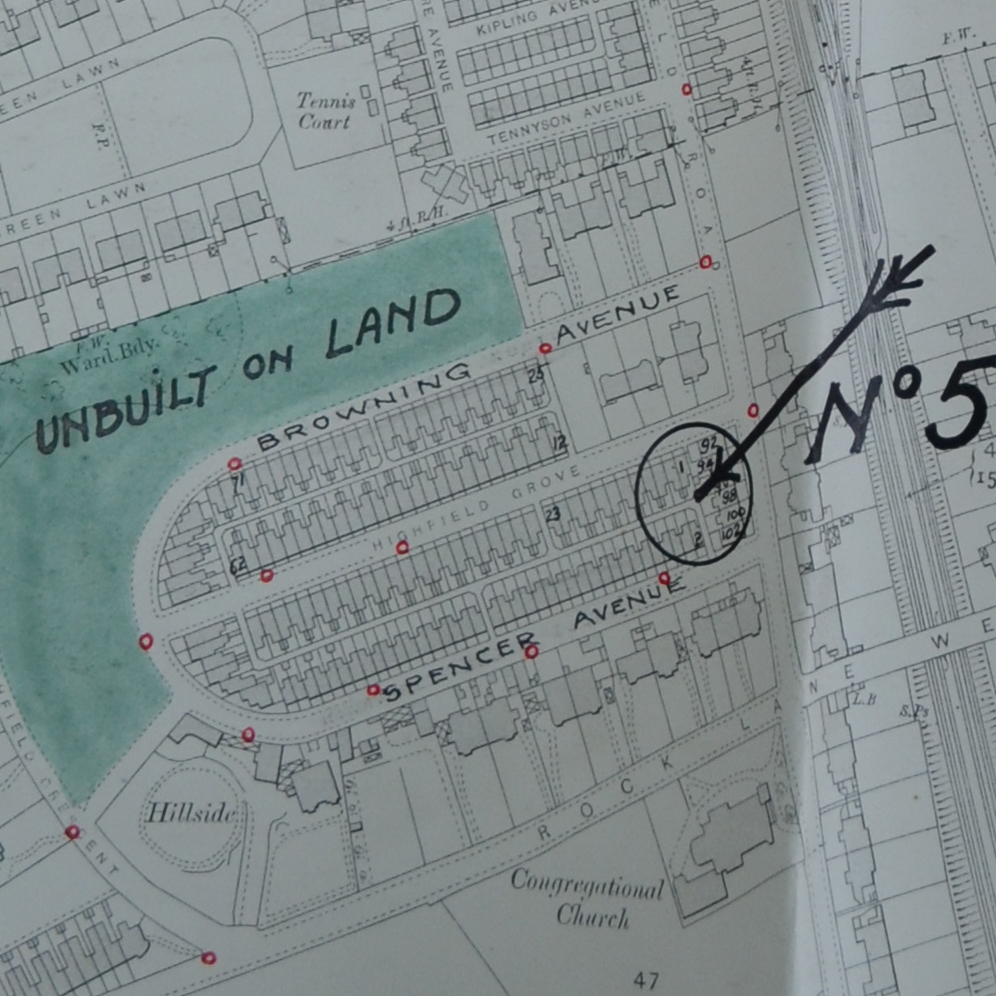

Age: 11
Sex: female
Date: 11 Jan 1925
Place: Back of Spencer Avenue, Rock Ferry, Birkenhead
Nellie Clarke vanished after having been sent out by her mother to a shop on an errand and was found dead the following day in an alley way.
She was last seen alive at about 8.20pm looking into a confectioner's window while apparently returning from the errand.
She was sent out at 7.30pm to the shop, a second-hand clothes shop, at 201 Old Chester Road which was only a short distance from her house and her mother expected her to only be gone for 30 minutes. The mother had previously taken some shoes there for the purpose of selling them and had sent Nellie Clarke to collect the money. The woman at the shop said that she saw Nellie Clarke at 7.35pm and said that she told Nellie Clarke to tell her mother to call on the Monday morning.
The last sighting of Nellie Clarke was shortly before 9pm by a woman who lived on Byrne Avenue who had left her house at 8.30pm and when she was at the top of St. Paul's Road said that she saw Nellie Clarke looking into the confectioner's window there. She said that Nellie Clarke noticed her and said hello and that she gave her a penny to give to her mother. She said that when she got to a drapers the assistant there informed her that it was 8.50pm and that when she returned Nellie Clarke had left the shop window. The woman's 8-year-old daughter who was with her also confirmed what had happened.

Another 11-year-old girl that had lived on Whitley Street said that she had seen Nellie Clarke at the corner of Bedford Road and said that she was skipping along in a happy fashion saying that she was unsure of the time but thought it was about 8.30pm.
She was found dead the next day in the common passage at the back of Spencer Avenue.
The time of her death was given as being between 9.30pm on 10 January 1925 and 12.30am on 11 January 1925.
Her body was found crouched outside a rear garden door near a telegraph pole in a little used passage not separately lighted. There was no indication of anything untoward with her clothing or other outward signs except some facial bruising and a small clot of blood found about a foot or more away from her body.
The district around was made up of better class modern houses for artisans built on an old allotment site near older good class houses and some waste ground.
It was said to be frequented by couples in the evenings, especially on Saturdays.
Upon examination there was evidence of a blow on the head sufficient to cause unconsciousness for half an hour, bruising on her left shoulder from the blade to the end of the spine, scratches on both sides of her ribs and long bruises and abrasions on her neck, all of which indicating that her throat had been held. There were also many bruises on her body and limbs and evidence of complete entry of her vaginal passage and of anal entry with even greater force. There were no other traces of violation, ie, no semen or blood marks.
Death was stated as being from exhaustion and shock.
It was thought that she had been outraged in a house while undressed. When found her body was completely and correctly dressed, including bloomers, but her mother said ten days later that her vest was missing. The vest was not found but her mother said that she hadn't seen her dress and was not sure if she had been wearing it. There was doubt over whether she had been dressed or not at the time of the crime. An elastic tape from the underclothing and a handkerchief were also noted as having been missing.

It was noted that the clot of blood found, if from the vagina or anus could not have been dropped after death.
Her step-father, who was noted as being a taciturn but kindly man, became the subject of local suspicion. However, the police noted later that suspicion did not attach to the parents.
On 13 January 1925 a peculiar button, similar to one missing from Nellie Clarke's coat was found in a well used thoroughfare about 200 yards from where she was found in the passage.
Her 13-year-old brother said that Nellie Clarke used to speak to a little old man who would give her pennies and pointed out a man to the police. However, the man was a jobbing gardener aged 75 and the police formed the opinion that he was not the man that Nellie Clarke used to speak to.
One man attracted the suspicion of the police as hairs were found on his coat which resembled the girl's hair. On 24 January 1925 the Chief Inspector persistently interrogated him but could find no occasion for further detention. The hairs found on the man's coat which were thought to have come from Nellie Clarke were later examined and were stated to be identical to hairs from his head.
It was noted that the infliction of the injuries by a woman was not ruled out.
The police said that there was close inter-connexion between the Liverpool and Birkenhead despite the Mersey between and the crime presented features suggesting a foreign seaman as the murderer.
There was a period of 25 minutes between about 7.55pm when Nellie Clarke left the shop to which she had been sent and 8.20pm when she was seen looking into the confectioner's shop which was less than 300 yards away which was not fully accounted for. It was noted that to go or be taken from the confectioner's shop to the spot where her body was found her house must have been passed and by the most direct route the dark lonely waste land must have been crossed.
The police noted that there was a full moon on the night she went missing and that it was otherwise a very bright night.
From 9pm until 10pm Nellie Clarke's mother said she stood at her door waiting anxiously for her before going to the shop to enquire after her. She then went back home and then reported to the police. Nellie Clarke's step-father stayed in minding the other children. They later both went to the Meadow Lane Police Station and were there at 2am.
At the time opinion began to form that the crime had been committed where her body was found.
Some suspects were cleared whilst others were still under suspicion. In particular, there was an ex-soldier with six convictions who had also been suspected in the Vera Hoad case but after interrogation by the Chief Inspector on 28 January 1925 he appeared to not be guilty of either offence.

When Nellie Clarke's stomach was examined they found a considerable quantity of undigested food, about 8oz in total including apple, orange, raisins, currants, cake, bread and tea. The orange had not been masticated at all. It was thought that the food had all come from the party at the Town Hall. There was also a considerable quantity of meat but it could not be determined whether it was ham or not. The doctor said that in a healthy child he would expect the food to pass through the stomach in four to five hours and assuming that she had had a meal at 4pm he would not expect to find any matter in her stomach if she had been alive at a 8.45pm.
After the contents of her stomach were examined the time of her death was modified to nearer 7pm rather than 9pm unless she had eaten after she had left a party at 4pm. She had earlier been to a party at the Town Hall given to children whose parents lost their lives in the war. She ate well at the party but not later back at her house. Her step-father said that after the party they went home together at 7pm where they divided an orange between themselves, the step-father, mother and other children but said that Nellie Clarke didn't eat any of it as she had already eaten. Her 8-year-old brother said that they had had an enjoyable time at the Town Hall and that they had had sandwiches, scones, cakes, bread and butter for tea.
Another doctor said that he thought that Nellie Clarke had had another meal after leaving the Town Hall and that the food content in her stomach had been the food from the second meal, noting that he would have expected the food from the first meal to have passed through. However, another doctor stated that he thought that the food found in her stomach was the food that she had eaten at the Town Hall.
The younger brother said that they walked home via Chester Street, Green Lane, Old Chester Road, Grove Road, Bedford Road and then to their home in Byrne Avenue. He said that they didn't cross any waste land and that when they arrived home he noticed that Nellie Clarke's boots were quite clean. He added that they were not hungry and not inclined for tea.
At the Coroner's inquest the Coroner asked the step-father whether they had a mangle or a perambulator in the house. The step-father said that they had a perambulator in the house and the Coroner then asked if the axles had ever been greased and he said not to his knowledge. The Coroner then asked if any lubricating oil had ever been used and he said not and then the Coroner asked him if he could explain how a patch of lubricating oil had come to be on Nellie Clarke's knickers, but the step-father said that he couldn't.
The doctor that found the mineral lubricating oil stain on Nellie Clarke's knickers said that he also found a dark stain on her petticoat that was of a clay or mud nature.
The man who found the body said that on the evening of 10 January 1925 he had gone to Birkenhead Market with his wife and later returned by tram to New Ferry and got off at Rock Lane West and arrived home at 8.30pm entering their house by the back door. He said that he was absolutely certain that there was no body there then. He said that he had two dogs, a retriever and a spaniel who were kept in his yard in separate kennels and that he slept soundly through the night hearing nothing from either of them. He said that he found the body at 8am on 11 January 1925 and also saw the pool of blood which he said was about the size of a half-crown.

When the man found Nellie Clarke he immediately called up for another man who lived in Highfield Road but who had stayed the night with the man at Spencer Avenue in the front bedroom who then telephoned for an ambulance. He said that he saw Nellie Clarke in the passage lying in a reclining position with her head against the telegraph pole, her body being across the back door of 96 Spencer Avenue. He said that her red Tam o'Shanter hat was held up between her head and the wall and the collar of her coat was turned up.
When a policeman arrived he said that Nellie Clarke was obviously dead and that her face was blue. He said that her clothing was not disarranged and that soon after she was taken to the Birkenhead and Wirral Children's Hospital.
The doctor who examined her said that she had some blood on the inner side of her left thigh and that rigor mortis had set in and that he thought she had been dead for more than eight or nine hours. However, he said that it had been a very cold night and that she might have been dead for twelve hours.
He found no signs of mud or dirt on her clothing other than mud on the soles and edges of her boots.
Her socks were also found to have blood on them.
At the inquest the Coroner denied rumours that the case had been prejudiced by not calling on Scotland Yard immediately.
see National Archives - MEPO 3/1613
see Wirral Globe
see Reynolds's Newspaper - Sunday 18 January 1925
see Illustrated Police News - Thursday 22 January 1925